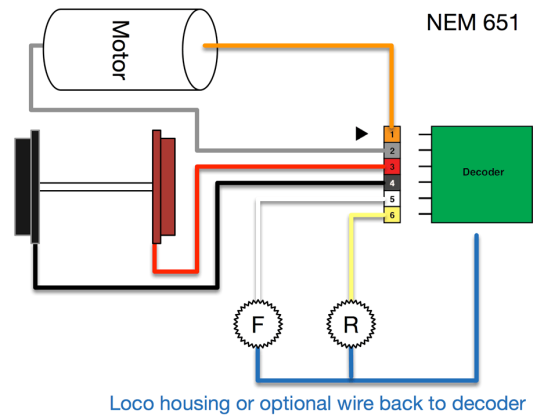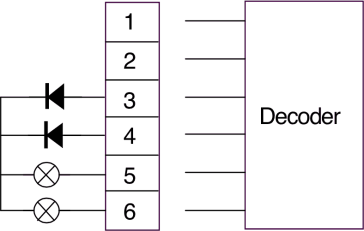
This post has translated abstracts of the European NEM Model Railway Standards. It’s not a 1:1 transcript.
With a bewildering variety of replacements underway, plux12, next18, mtc14.. this is still the grand daddy for (European) N Scale locomotives and a poster child for having the luxury of a standard with interoperability and a wide choice of decoders.
Many locomotives available on eBay are extremely easily to convert when they sport one of these. With older locomotives without a connector, you may need to do a bit more and understand the schematics. Many decoders sport pretty good instructions for it, but if not the NEM 651 standard itself can help you on your way.
The better decoders are protected from the effects of plugging them in wrongly or shorting outputs, but not all – so be careful. Often the nr.1 pin is marked visibly, but sometimes matching the chip layout to the instruction schematics is the only way.
The 6 pins connect the power to the engine plus two outputs – which are assumed to be the front and back lights. Some brands have extra outputs which can be soldered onto the edge of the decoder’s PCB. The size of just the PCB is typically between 10-14mm long, 8-10mm wide, and 1.5-2.5mm height. Depending on the brand, you may get the decoders as a direct 6-pin plug, or with flat cable or individual cables / plug – or they offer any of these.
Here’s a schematic to illustrate the pin assignment:


A note from the NEM651 guide to maintain full lighting compatibility with analog layouts, the common wire for the lights should not be connected straight to the rail, but like this:
Links to NEM651 DCC decoder manufacturers / brands
- CT Elektronik
- DCC Concepts
- Digitrax
- Doehler & Haass
- ESU (Loksound/Lokpilot)
- Fleischmann / Roco
- Lenz
- Kühn
- Soundtraxx (Tsunami)
- Tams Elektronik
- Trix / Märklin
- Zimo
(Please feel free to let me know of brands not included, in the comments)

One thought on “NEM651: The 6-pin decoder socket standard”